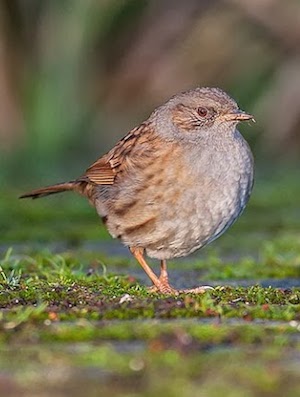County Kildare

Birding County Kildare
County Kildare (Irish: Contae Chill Dara) is an Irish county located to the southwest of Dublin in the province of Leinster. The name comes from the Irish, meaning church (Cill) of the oaks (Dara).Kildare is bordered by the counties of Carlow, Laois, Meath, Offaly, Dublin and Wicklow. Kildare is part of the ‘Greater Dublin Area’, a regional area surrounding Dublin.
As an inland county, Kildare is a generally lowland region. The county’s highest points are the foothills of the Wicklow Mountains bordering to the east. The highest point in Kildare is Cupidstown Hill on the border with Dublin, with the better known Hill of Allen in central Kildare.The county has three major rivers running through it: the Barrow, the Liffey and the Boyne. The Grand Canal crosses the county from Lyons on the east to Rathangan and Monasterevin on the west. A southern branch joins the Barrow navigation at Athy. The Royal Canal stretches across the north of the county along the border with Meath. Pollardstown Fen is the largest remaining calcareous fen in Ireland, covering an area of 220 hectares and is recognised as an internationally important fen ecosystem with unique and endangered plant communities, and declared a National Nature Reserve in 1986.The Bog of Allen is a large bog that extends across 958 km2 and into County Kildare, County Meath, County Offaly, County Laois, and County Westmeath. Kildare has 243 km2 of bog (almost 14% of Kildare’s land area) mostly located in the south-west and north-west, a majority of this being Raised Bog. It is habitat to over 185 plant and animal species.There are 8,472 hectares (20,930 acres) of Forested land in Kildare, accounting for roughly 5% of the county’s total land area. 4,056 hectares of this is Coniferous, while there is 2,963 hectares of Broadleaf and the remaining area are Unclassified Species. Coillte and Dúchas currently own 47% of the forestry. Coillte run Donadea Forest Park which is in North-Central Kildare. The forest covers 259 hectares of mixed woodland (60% Broadleaf, 40% Conifer) and is the largest forest park in Kildare.
-
Wikipedia
GNU Free Documentation License
http://en.wikipedia.org/wiki/County_Kildare
-
BirdWatch Ireland Kildare Branch
WebsiteThe Kildare Branch of BirdWatch Ireland - Protecting Ireland's birds and their habitats. The Kildare Branch of BirdWatch Ireland was founded in 2010, and since then has been a very active organization within the county. We hold monthly talks on the second Thursday of every month at 8pm in The Town House Hotel, Naas. These talks are based not only on birds but also on general conservation topics from BirdWatch Ireland members of staff and other national experts. Also see their Facebook
-
NR Pollardstown Fen
WebpageSatellite ViewPollardstown fen is the largest remaining calcareous spring-fed fen in Ireland. Covering an area of 220 ha, it is recognised as an internationally important fen ecosystem with unique and endangered plant communities. On a visit to Pollardstown in the summer you are likely to see Mute Swans, Herons, Little Grebes, Coot and Moorhen on the lake, while parties of Sand Martins swoop low over the open water hunting for insects. The fens, reeds and grasslands are home to Reed Buntings, Meadow Pipits and Skylarks. Some birds are more easily heard than seen: from the sedge and reed beds Water Rails call noisily and the drumming of Snipe can be heard; across the fen Sedge Warblers sing loudly in defence of their territories. In winter these birds are joined by migrating wildfowl such as Pintail and Tufted Duck. A number of mammals live on the fen including the Otter, Hare and Pygmy Shrew, while the Common Frog and Smooth Newt are common amphibians. The fen supports many species of invertebrates such as dragonflies and damselflies, and butterflies include the Orange Tip, Green Veined White, Tortoiseshell, Speckled Wood and Common Blue.
